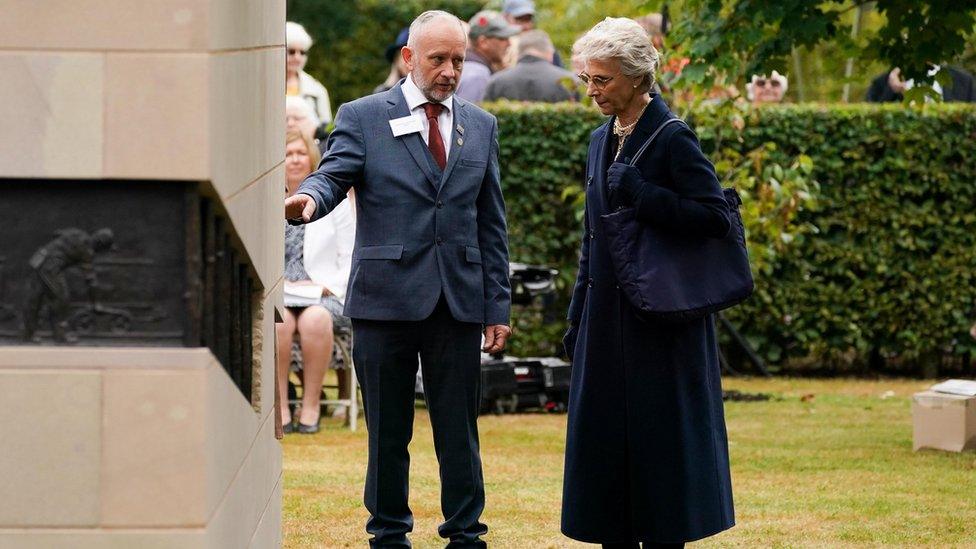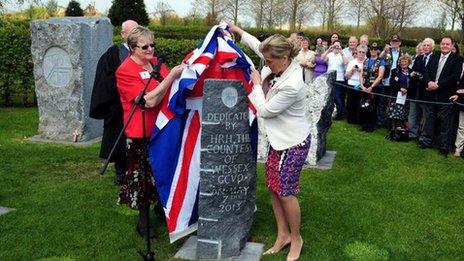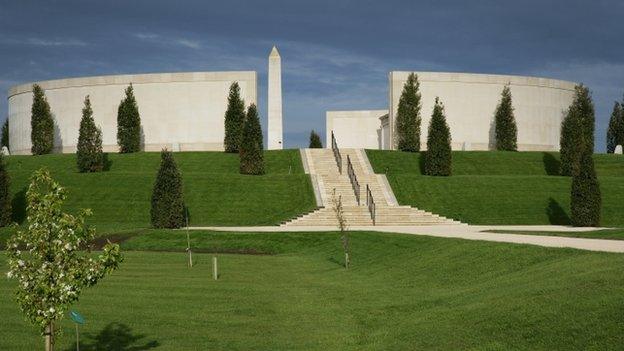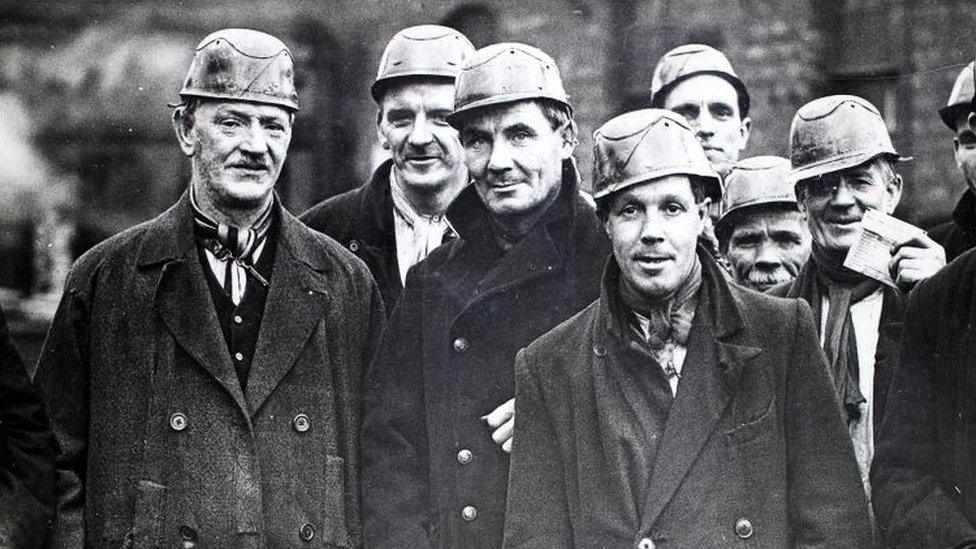National Memorial Arboretum: Miners project unveiled
- Published

Members of the Lea Hall Brereton Collieries Memorial Society attended the unveiling
A memorial recognising the men, women and children who worked in the mining industry has been unveiled by the Duke and Duchess of Gloucester.
The National Miners' Memorial also marks the contributions of workers who served or died for their country.
Former miners attended the event at the National Memorial Arboretum at Alrewas, Staffordshire.
Bronze friezes on the memorial include depictions of the Mine Rescue Service and the so-called Bevin Boys.
Bevin Boys were conscripted to work as miners during World War Two.

The Duchess of Gloucester speaks to the artist behind the memorial, Andrew DeComyn
Other panels on the £100,000 tribute, designed by artist Andrew DeComyn, were funded by donations from mining heritage groups in Kent, Leicestershire and the north-west of England and show the aftermath of a roof collapse.
West Midlands volunteer group Chase Arts for Public Spaces (Chaps), based in towns within the former Cannock Chase Coalfield, raised the sum.

The permanent memorial is to commemorate the men, women and children who worked in the industry
Chaps member Len Prince, a former miner, said it was "only fitting" that the miners' memorial was near others honouring the RAF Regiment and an Army artillery regiment.
"The Industrial Revolution was bought on the backs of the hard work of miners," Mr Prince said.
"In the First World War, half a million miners volunteered to fight and a lot of them were sent digging trenches, but a proportion of them were sent tunnelling under the German lines.
"It was top secret work and one of the most dangerous things you could do - so the memorial has got plaques representing that."

Follow BBC West Midlands on Facebook, external, Twitter, external and Instagram, external. Send your story ideas to: newsonline.westmidlands@bbc.co.uk, external
Related topics
- Published7 May 2013

- Published20 July 2020

- Published11 February 2021
